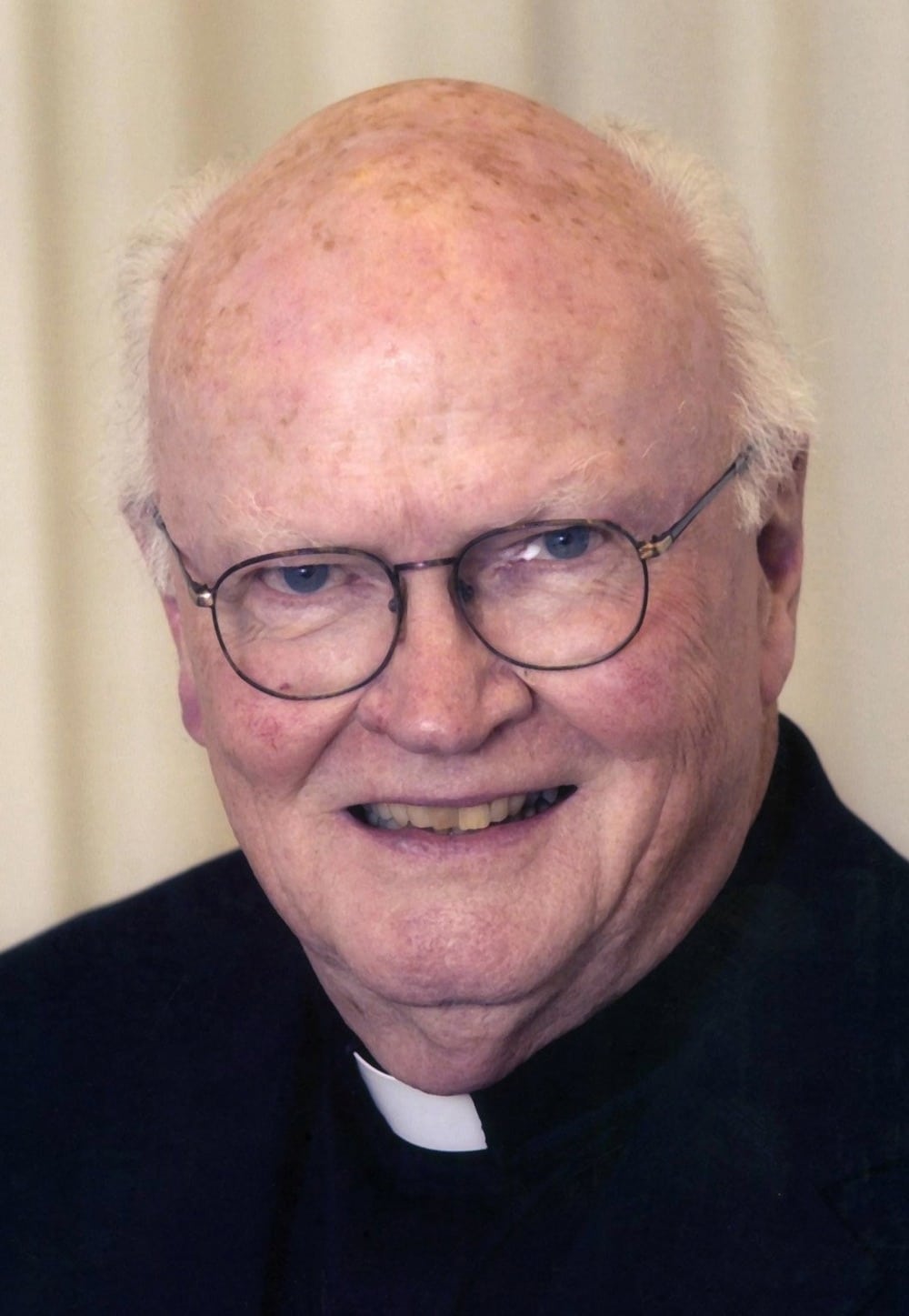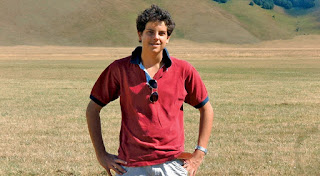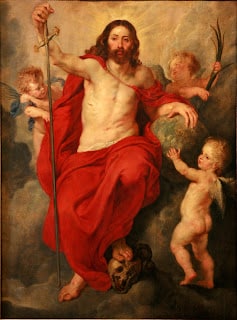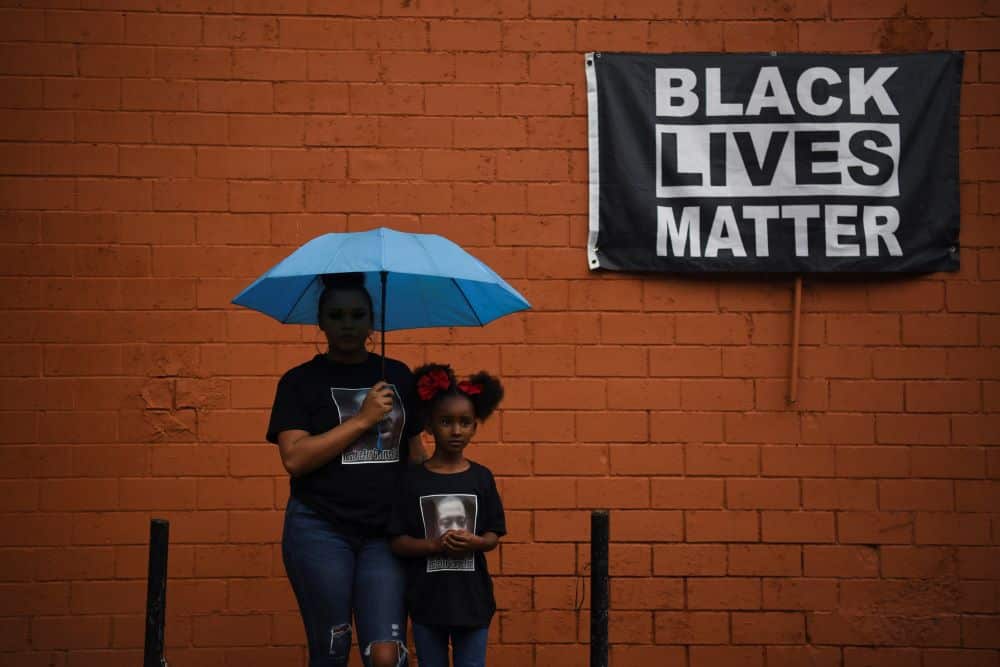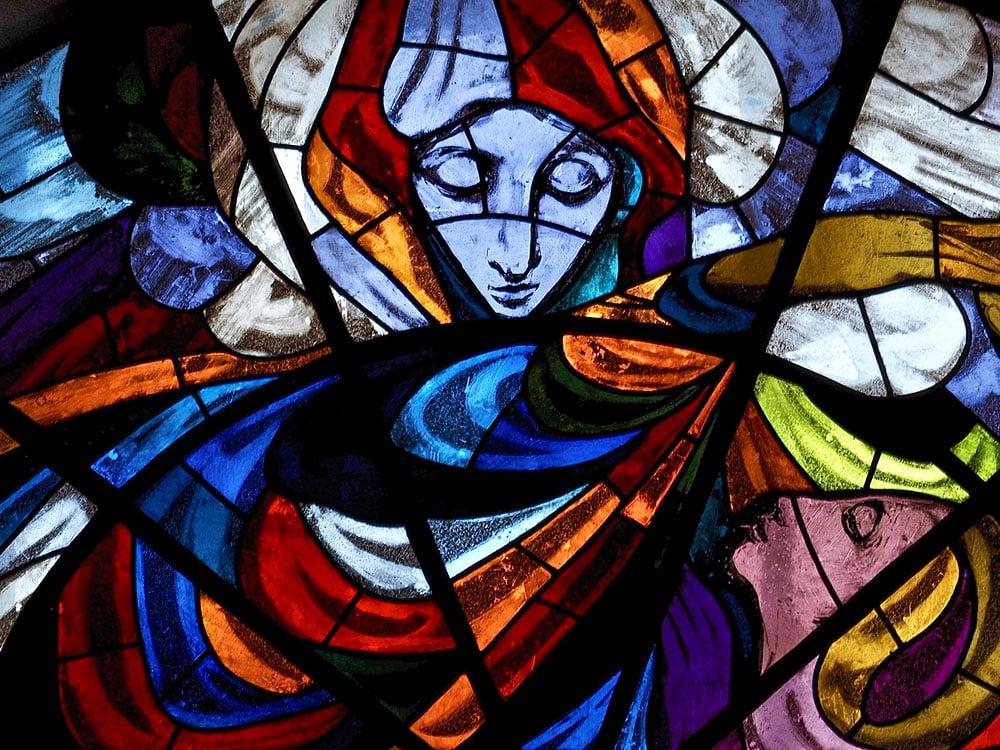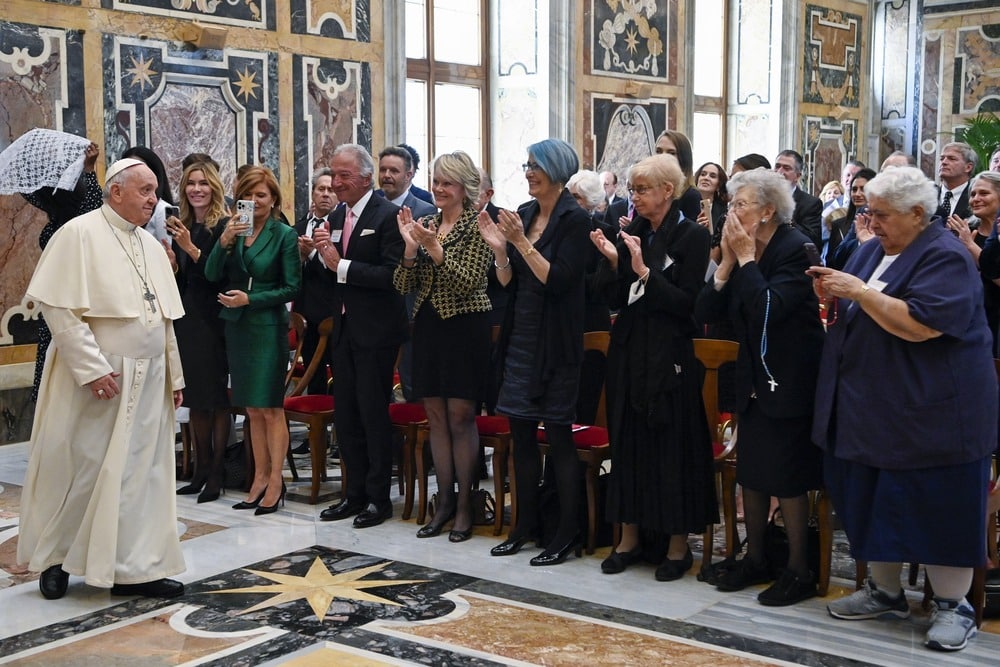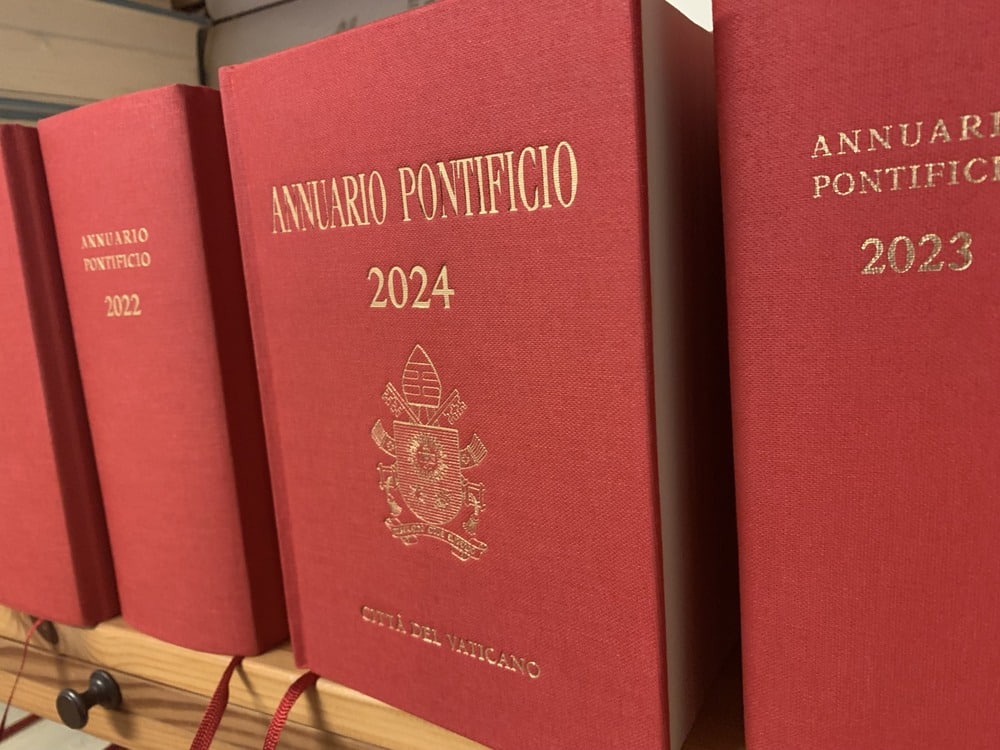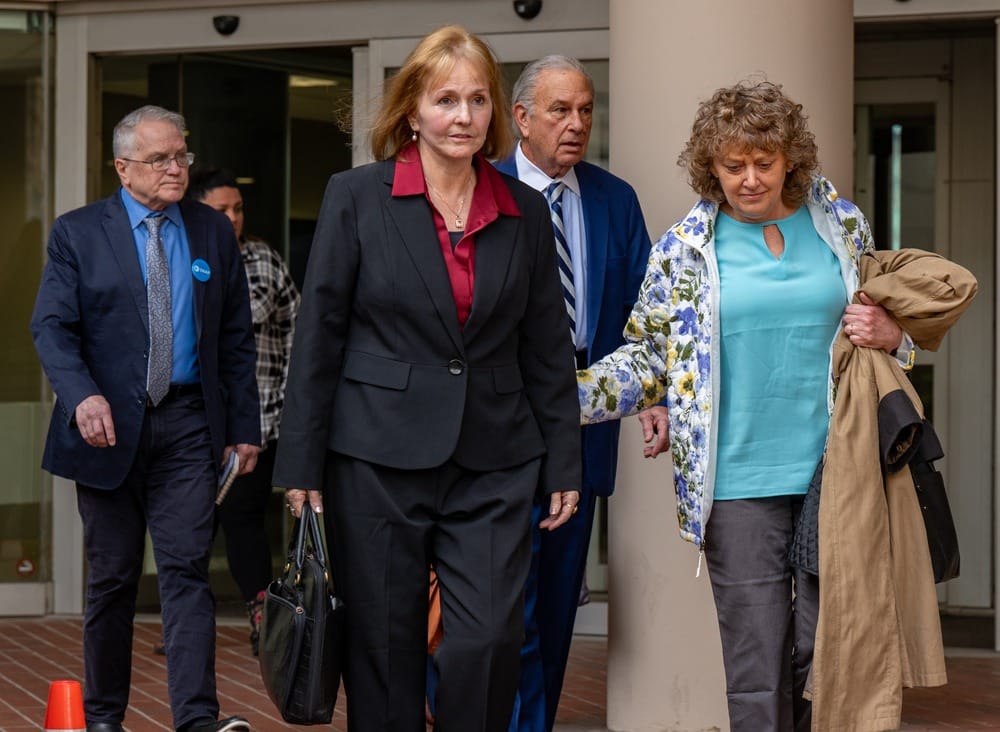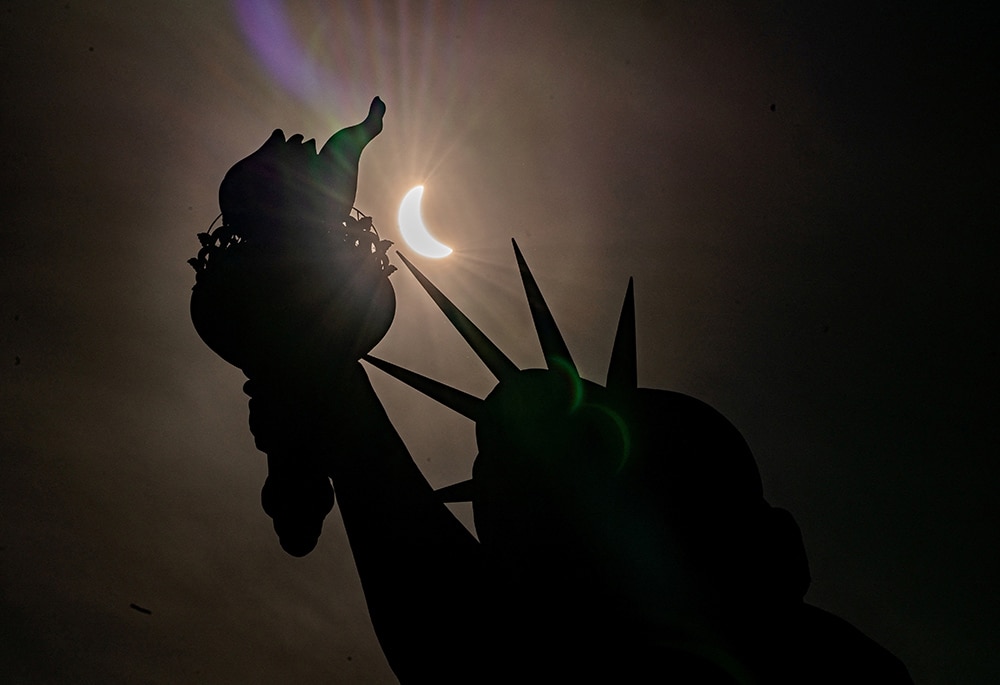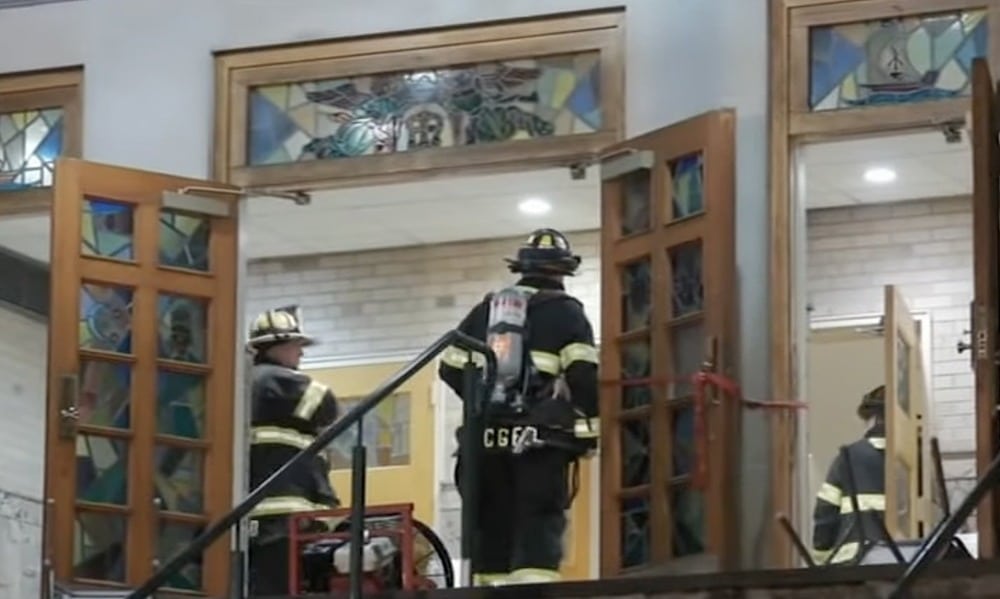
After an early morning fire April 4 reportedly set by a resident damaged the sanctuary of Our Lady of the Lake Church in Verona, the church could reopen its doors for Mass the weekend of April 20-21, said Father Peter G. Wehrle, pastor.
On April 4, Elliot Bennett, 42, allegedly broke into the church using a crowbar and set fire to about 10 pews, statues of Mary and Joseph, and the altar, according to police reports. Bennett turned himself into the Verona police station just hours after the incident admitting to the crime, and faces nine charges including burglary, arson, weapons and bias intimidation, according to the Essex County Prosecutor’s Office.
Fire alarms alerted the fire department, which quickly extinguished the fire. In a Facebook announcement to the community on April 4, Wehrle, said the fire did not damage the structure of the church, which was built in 1964 to replace a smaller church and accommodate a then-burgeoning parish.
« Fortunately, the structure appears to be sound, but the church is heavily damaged, » he wrote. « However, we are grateful that no one was injured. … Faith teaches us that we are all created in the image and likeness of God and that we must ask him to help guide everyone into the way of his peace. »
Wehrle said a restoration company was brought in to clean up the soot. The pipe organ and pews were scheduled to be assessed by professionals. The statues, the kneelers in front of them and altar linens were destroyed.
« Unfortunately, the church is heavily damaged, and the parish community is heartbroken, » the Archdiocese of Newark said in a statement. « However, we have faith that we will get through this difficult time and request the community to keep those affected in their prayers. »
Rabbi Robert Tobin of B’nai Shalom in West Orange comforted Father Wehrle as he assessed the damage from the fire. Pastor Anthony Giordano of the Calvary Lutheran Church, which is located around the block from Our Lady of the Lake, also offered the parish community his church.
« Sanctuaries are supposed to be a place of peace, » he said, adding that the fire was « devastating to someone like myself who treasures all houses of worship. »
Just hours before the fire, Muslims, Jews and Christians joined together at an Iftar dinner held in town. Wehrle said faith leaders discussed the shared values of their faiths including the importance of fasting.
« We have received an outpouring of support from various houses of worship and individuals and by the grace of God, we will work together to help instill a sense of peace in our community, » Wehrle said.
« Unfortunately, this isn’t the first time Elliot has caused damage at our church, » Wehrle told Jersey Catholic, Newark’s archdiocesan news outlet. Bennett was arrested last year after he admitted to defacing a statue of Jesus outside the church, police said. In 2018, he was arrested after he smashed statues of Jesus, St. John and the Blessed Mary, saying people should not « worship false idols made from stone, » according to police.
Although the items around the church sustained damage, the fire did not damage the faith of the 2,700 parishioners, many of whom attended last weekend’s Masses relocated to the neighboring school auditorium.
During Mass on April 7, Wehrle asked for prayers for Elliot and his family while calling for a reconsideration of how we approach mental illness.
« We need to be helping him and praying for him and his family, » Father Wehrle said in his homily.
The church had just celebrated a joyous Easter season. Newark Cardinal Joseph W. Tobin celebrated Palm Sunday at Our Lady of the Lake on Palm Sunday, March 24. Father Wehrle said over 2,000 of the faithful attended Easter Masses. The church is also celebrating its centennial this year.
The U.S. Conference of Catholic Bishops has documented over 300 acts of vandalism, arson, and other destruction at parishes and other Catholic sites in the United States since 2020. These include arson and statues getting beheaded, cut, smashed, and painted. Gravestones have also been defaced with swastikas and anti-Catholic language, and American flags next to the graves have been burned.
